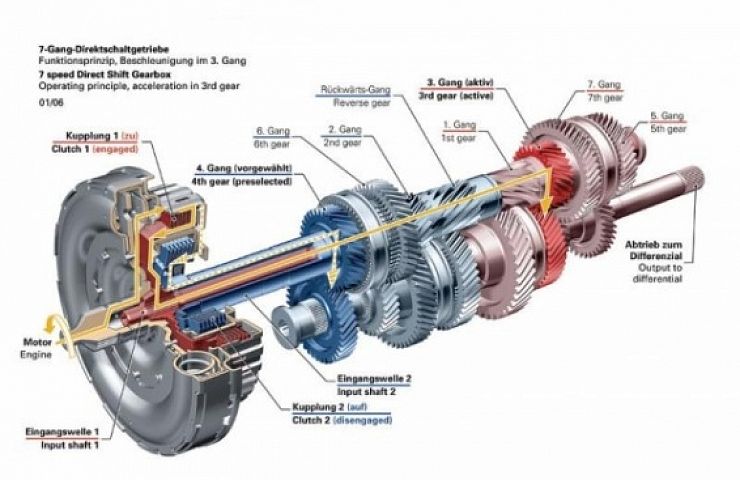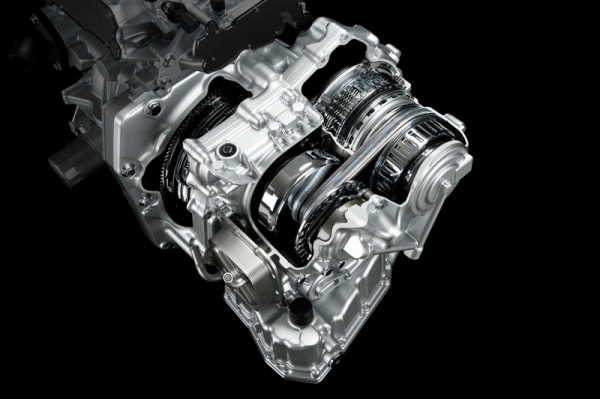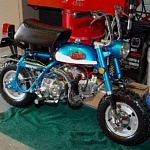Shifting your own gears is great, but sometimes you’d just rather let the transmission take care of itself. Why bother with a clutch pedal when you don’t have to? That’s where the automatic transmission comes in, and since their introduction in the early 1940s, they’ve come a long way in terms of design and performance.
What is an Automatic Transmission?
Fundamentally, an automatic is a lot like a manual in that both feature a number of gears that channel the engine’s rotational power to the drive wheels. But in most automatics, the gears are a planetary system — several outer gears that revolve around one central gear — and most use internal bands and clutches to effect gear changes that are controlled by hydraulic servos fed by a hydraulic valve body.
And rather than a flywheel and a clutch made of friction material, most automatics rely on a torque converter that uses hydraulic fluid, an impeller, a turbine, and a stator to transfer rotational power from the engine through to the transmission. This fluid coupling lets the engine continue to run, even when the car is in gear and fully stopped.
All of that sound complex? It is. But the end result is smooth shifting at pre-programmed times, long service life, and not a lot of fuss from the driver.
Automatic Transmission History
Some of the first automatics were developed by GM during the 1930s and culminated with the release of the Hydra-Matic trans in 1940. That transmission saw battle duty in U.S. tanks during World War II, proving its durability and reliability. After the war, automatics became commonplace in new cars, and the buying public loved their simplicity of use. Just start the car, drop it in ‘D,’ and you’re off. No more clutch, no more shifting.
How Many Gears Do You Need?
For years, most automatic transmissions tended to have only two or three gears, like the two-speed GM Powerglide in the 1967 Chevrolet Nova and the three-speed Chrysler 727 Torqueflite in the 1968 Chrysler Newport. But starting in the 1980s and 1990s, four-and five-speed automatics started appearing. Today, automatics can have as many as eight forward speeds, and many feature a number of internal electronic features instead of the hydraulics that dominated the design for decades. The end result? Smooth shifting, excellent acceleration, and low cruising RPMs, helping to lower fuel consumption and tailpipe emissions.
Today’s Automatics are not Slushboxes
Think automatics are slushboxes that take all the feeling out of driving? That used to be true, but not anymore. The aftermarket made automatics into hardcore racing units starting with the B&M Hydro Stick in the 1950s. In drag racing circles, tuned GM Powerglides, TH400s, and Ford C6 transmissions are the standard now, rather than 4-speed manuals. These units are set up for hard-hitting shifts that are dead consistent, every time. Couple any one of them with a high stall torque converter, and you’ll get wheels-up launches when the lights go green.
Dual-Clutch Transmissions
Modern automatics don’t all feature the same traditional automatic components. A good example is the 6-speed Borg-Warner unit in the Nissan GT-R – it’s a dual-clutch operated automatic with paddle shifters. No hydraulic torque converter here, and no clutch pedal either. It’s the best of both worlds, and it offers lightning quick shifts at the driver’s command. The GT-R is a world-class performer, and its high-tech automatic and all-wheel drive system are part of the reason why.
CVTs: Infinite Gearing
In recent years, CVTs, or continuously variable transmissions, have also started appearing. These offer an infinite number of gear ratios. There are a handful of different designs here, with some using cones linked together by a belt or a chain. Overall, CVTs deliver a smooth stream of power and tend to offer good fuel economy as well. The Toyota Camry is a good example of a car that features a CVT, and it offers both simplicity of use and an excellent 40 mpg city rating.
So there you have it. Transmissions in a nutshell. So next time you go grabbing for that gear lever, you’ll have a little more of an idea of what’s happening underneath you.






